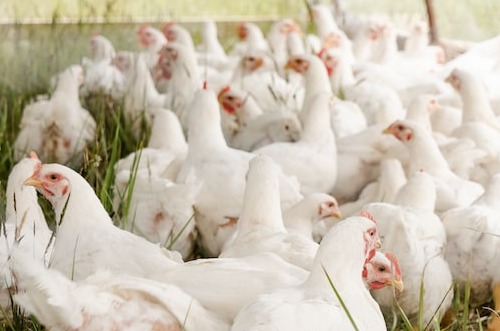W23: Chicken Update

In W23 in the chicken landscape, ABPA outlines that Brazilian chicken meat exports (including all products, between fresh and processed) in May-2023 totaled 433.3 thousand mt, valued at USD 867.4 million, up 0.9% YoY in volume but down 4.1% in value. In the Jan-May period, Brazilian chicken meat shipments amounted to 2.183 million mt, valued at USD 4.281 billion, up 9.7% in volume and 13.4% in value compared to the same period in 2022. In the first five months of 2023, Brazilian chicken meat shipments were mainly destined for China (328 thousand mt), Japan (178.7 thousand mt), Saudi Arabia (148.1 thousand mt), and the EU (101.4 thousand mt). In the Jan-May period, Brazilian chicken meat for exports was mainly sourced from Paraná at 907 thousand tons (+11.7%), Santa Catarina at 454.5 thousand tons (+8.7%), Rio Grande do Sul at 309.7 thousand tons (+0.8%), São Paulo at 125.8 thousand tons (+19.9%), and Goiás at 99.8 thousand tons (+33.7% ).
SECEX/ME indicates that, in the first five months of 2023, Brazilian fresh chicken meat (whole poultry and its cuts) revenue reached just over USD 3.9 billion, an increase of 14.28% compared to the same period in 2022, improving from the seventh position to the sixth main product in foreign exchange earnings. This indicates that the product’s share in foreign exchange earnings increased by just over 10%, corresponding to 2.86% of the nearly USD 136.4 billion earned by Brazilian exports. The rise of chicken meat to a new position was due to the better results obtained in 2023 and due to the weak performance of beef exports, whose revenue suffered a sharp decrease. IBGE reports that in Q1-2023 in Brazil, chicken production in Paraná reached a record 547 million units, an increase of 48.17 million compared to Q1-2022. This indicates a wide margin, with 34% of the national share, well ahead of the states of Santa Catarina (13.1%) and Rio Grande do Sul (12.7%). %). Also, Paraná registered the highest increase in chicken production (+48.17 million), almost four times better than the state of Goiás (+12.52 million), followed by São Paulo (+7.19 million), Santa Catarina (+5.52 million), Minas Gerais (+5.35 million), and Mato Grosso (+1.72 million).
In Mar-2023, the Dutch consumer price index (CPI) of poultry meat reached 145 points, an increase of 2% compared to Jan-2023. Prices in the supply chain remained fairly stable, while the price index of domestic ex-slaughterhouse products (PPI) stood at around 147 points. Also, the producer price abroad remained at the same level at approximately 139 points. In the Jan-Mar period, the index of ex-farm prices remained at about 138 points. In Jan-2022, the price level was still at 109 points. The main part (90 to 95%) of the Dutch domestic sales of poultry meat products is sold in supermarkets, with fresh chicken breast as the most important product. The consumer price of chicken has few seasonal influences. Usually, the price drops in January only to rise again by summer. Dutch meat processors make agreements with the buyers of the supermarkets about the quality and price of the products. The majority of Dutch broiler farmers (with approximately 65% of the chickens) keep conventional fast-growing chickens. The meat from these chicks is sold in the food service industry (mainly quick-service restaurants) or exported. The ex-farm price (API) is based on the market price of the common fast-growing chicks. However, the consumer price is based on the prices in Dutch supermarkets and therefore relates to slow-growing broilers. In a normal situation, there is a trade-off between the ex-farm price of the fast-growing and slow-growing broilers.
In Malaysia, Prime Minister Anwar extended chicken and egg subsidies and agreed to continue to control prices. Malaysia’s chicken and egg subsidy policy was expected to end on June 30th, when the price of broilers and eggs would float freely, and the government was also expected to completely cancel live broiler chickens' export restrictions. Lastly, the Agricultural Observation Center of Korea Rural Economic Institute reports that South Korean chick stock in Jun-2023 was estimated at 71.06-72.55 million, down 3% YoY and 6.4% on average. As a result, South Korean broiler slaughter in Jul-2023 is expected to reach 68.77-70.21 million, down 3.1% YoY and 7.3% on average. However, although the supply of broiler chickens in July is expected to decrease, the supply of chickens is expected to increase compared to 2022 and the yearly average. The number of broiler chickens slaughtered in June was 63.58-64.92 million, a decrease of 4.1% YoY and 9.1% on average, due to the decrease in the number of chicks stocked and a slight decrease in the breeding rate in May-2023.






